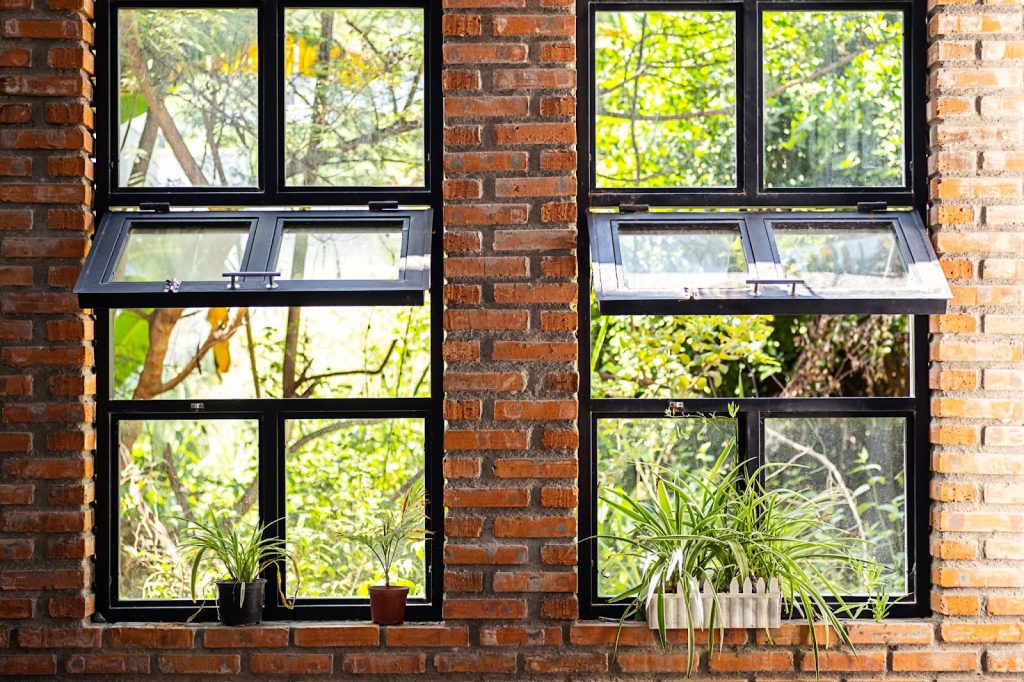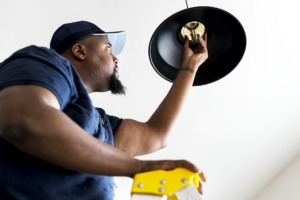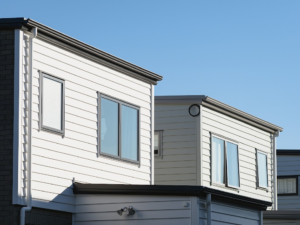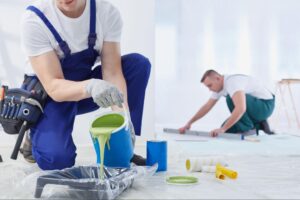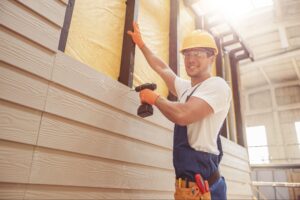Windows plays a crucial role in maintaining a home’s energy efficiency. They can contribute to utility savings or cause unnecessary expenses if improperly maintained. Cracks, poor insulation, or single-pane installations can lead to significant heat loss during the winter and increased heat gain in the summer, putting strain on heating and cooling systems. Homeowners can achieve substantial utility savings by focusing on effective window repairs, extending beyond immediate repairs to long-term energy consumption and cost-efficiency benefits.
Identifying Window Issues for Effective Repairs
Identifying window issues as early as possible is critical to preventing minor problems from escalating into costly repairs. By being vigilant about these signs, homeowners can target repairs effectively to improve energy efficiency and utility savings. Here are key signs to look for:
Cracks and Chips
Visible damage to window panes or frames, such as cracks or chips, can compromise insulation and lead to drafts, reducing energy efficiency. Even tiny cracks can expand over time, weakening the window’s structure and allowing more air leakage.
Warped Frames
Warping, often due to moisture or temperature fluctuations, creates gaps that undermine heating and cooling systems by allowing air to pass through. Warped frames not only reduce insulation but can also affect the functionality of the window, making it difficult to open or close.
Drafts
Detect drafts by placing a hand near the window edges. Drafts usually result from deteriorated weatherstripping or poorly sealed frames, leading to air leaks. These leaks increase energy consumption as HVAC systems work harder to maintain a consistent indoor temperature.
Condensation
Moisture or fog between double or triple-pane windows indicates a seal failure, reducing insulation efficiency. This issue also implies a loss of the insulating gas layer between the panes, which is essential for thermal regulation.
Difficulty in Operation
If the window is hard to open or close, the issue could stem from debris in the track, worn-out components, or warped frames. Misaligned sashes and tracks can further exacerbate the problem, making it hard to secure the window.
Malfunctioning Hardware
Damaged or old locks and latches can compromise security and insulation by preventing the window from closing tightly. Loose or broken hardware makes penetrating drafts easier, reducing the window’s efficiency.
Signs of Decay or Mold
Decay or mold on wooden window frames suggests moisture infiltration, which can deteriorate frames and reduce insulation. Moisture damage can weaken the frame’s structure, requiring complete replacement.
The Role of Professional Assessments in Window Repairs
Professional assessments are crucial in ensuring effective window repairs and replacements. Experts can accurately identify underlying issues that may not be visible to the untrained eye. They can recommend appropriate solutions tailored to the home’s needs, considering climate and construction factors. An expert assessment also helps homeowners prioritize repairs based on potential utility savings, ensuring investments target areas with the highest return. Leveraging professional advice ensures repairs align to optimize utility savings.
Top Methods to Maximize Utility Savings Through Window Repairs
Window repairs are crucial for enhancing energy efficiency and reducing utility bills. They address specific issues that compromise a home’s thermal regulation. Homeowners can significantly reduce energy waste and save on utility costs by identifying and repairing these issues.
Improved Insulation
Repairing or replacing damaged window panes and frames enhances insulation by reducing air leaks. Enhanced insulation ensures that heat stays inside during winter and cool air remains inside during summer, reducing the strain on heating and cooling systems and lowering utility bills.
Air Leak Prevention
Sealing gaps and cracks around the windows prevents drafts and unwanted air exchange, forcing HVAC systems to work harder. By preventing air leaks, window repairs reduce the loss of conditioned air, allowing heating and cooling systems to maintain consistent temperatures with less energy usage.
Enhanced Glazing
Upgrading to double or triple-pane windows with gas insulation or repairing faulty glazing improves thermal efficiency. Modern glazing technologies significantly reduce heat transfer, helping homeowners achieve a noticeable reduction in energy consumption and costs.
Better Ventilation
Functional window hardware allows for adequate ventilation when needed, reducing the reliance on air conditioning. Homeowners can naturally cool their homes during mild weather by ensuring that windows open and close properly, minimizing the need for energy-intensive cooling systems.
UV and Heat Protection
Installing or repairing tinted windows or window films helps control the amount of sunlight entering the home. It prevents heat gain in the summer, reducing the need for air conditioning and protecting interior furnishings from UV damage, contributing to a cooler and more comfortable living environment.
Efficient Window Treatments
Repairing or adding functional shutters, blinds, or shades works with the windows to regulate light and temperature. Effective window treatments provide an additional layer of insulation, reducing reliance on heating and cooling systems and enabling homeowners to fine-tune their indoor climate efficiently.
Condensation Management
Repairing window seals to prevent condensation preserves the insulating gas layer in double—or triple-paned windows. Properly functioning seals ensure that these windows maintain their effectiveness in insulating the home, preventing unwanted moisture from damaging the window and reducing its insulating properties.
Homeowners can significantly optimize utility savings by focusing on window repairs, making their homes more comfortable and energy-efficient. Investing in these repairs reduces energy bills and contributes to the home’s long-term sustainability and comfort.
Benefits of Window Repairs
Window repairs are crucial for maintaining a home’s energy efficiency and comfort. Addressing issues like drafts and faulty seals helps lower utility bills and enhances the living environment. By proactively repairing windows, homeowners can increase property value while contributing to long-term sustainability.
Cost Savings
One of the most significant benefits of window repairs is reducing energy bills. Window repairs ensure that HVAC systems work more efficiently by addressing drafts, improving insulation, and sealing gaps. This reduction in energy usage directly translates to lower utility bills, making window repairs a smart investment.
Enhanced Comfort
Properly repaired windows improve a home’s thermal regulation, keeping the indoor temperature consistent regardless of outside weather. Eliminating drafts and improving insulation lead to a more comfortable living environment, reducing hot or cold spots within the home.
Increased Property Value
Well-maintained windows improve a property’s aesthetic and structural integrity. Homes with efficient, repaired windows are more attractive to potential buyers, and energy-efficient features often command higher resale prices.
Environmental Impact
Window repairs contribute to a more environmentally friendly home by reducing energy consumption. Lower energy usage means a smaller carbon footprint, which benefits the environment. Efficient windows also align with eco-conscious trends, adding to the property’s appeal.
Noise Reduction
Repairing or upgrading windows can significantly reduce external noise, making the home quieter and more peaceful. Proper seals and modern glazing techniques help minimize noise intrusion, improving the quality of life inside the house.
Extended Window Lifespan
Regular repairs and maintenance extend the lifespan of windows, delaying the need for complete replacements. By fixing issues like faulty seals or damaged frames early on, homeowners can prolong the useful life of their windows and delay costly replacements.
Improved Safety and Security
Repairs that ensure windows open and close properly enhance home security. Sturdy locks and functional window hardware help secure the home, while fixing broken panes reduces safety hazards.
By leveraging these benefits, homeowners can appreciate the full impact of window repairs on their comfort, finances, and overall quality of life.
DIY Repairs vs. Professional Services
Deciding between DIY repairs and professional services requires careful consideration. DIY repairs can be cost-effective for minor issues like resealing or weatherstripping but can lead to mistakes if the problem is more complex. Professional services bring expertise and equipment that ensure comprehensive repairs, though they may be more expensive. Homeowners should weigh their skills and the complexity of the repairs needed. Professional services often provide better long-term results, optimizing utility savings by preventing costly mistakes.
Preventative Measures to Avoid Major Window Repairs
Implementing preventative measures helps maintain window efficiency and prevent significant repairs in the future. Regularly checking seals, frames, and hardware helps identify issues before they worsen. By making preventative maintenance a routine habit, homeowners can avoid costly repairs and ensure their windows remain efficient, contributing to long-term utility savings.
Inspecting for Drafts
Regularly check for drafts around windows by feeling for cold air during winter or hot air during summer. Drafts are typically signs of deteriorated seals or gaps in the frames, which can lead to significant energy loss if addressed. An easy way to detect drafts is by holding a lit incense stick near the edges of the window; if the smoke moves, you have a draft.
Examining for Cracks and Damage
Inspect window panes and frames for visible cracks, chips, or warping. Cracks in the glass reduce insulation and can lead to further damage if they expand. Early detection allows for prompt repairs that maintain window efficiency. Remember to check wooden frames for signs of rot, which can compromise the structure and require replacement.
Maintaining Hardware
Regularly examine window hardware, including locks, hinges, and latches, to ensure they function correctly. Tighten any loose hardware and lubricate moving parts to keep Windows operating smoothly. Functional hardware ensures windows close securely, which is crucial for maintaining insulation. Also, regularly clean and inspect the sash to keep the window opening and closing smoothly.
Cleaning Window Tracks and Panes
Dirt and debris accumulation in window tracks can hinder smooth operation, while dirty panes reduce visibility—regularly clean tracks and panes to prevent debris buildup and ensure proper window functionality. Clean windows also allow more sunlight, warming the home in colder months. Be sure to clean out drainage channels to prevent water buildup and leaks.
Resealing and Caulking
Check the window seals and caulking for cracks or gaps. Resealing and caulking help prevent drafts and moisture infiltration, maintaining the window’s insulating properties. Properly sealed windows avoid air leakage and enhance energy efficiency. Regularly inspect and repair gaps to ensure the window is airtight and energy-efficient.
Climate-Specific Recommendations for Windows
Selecting windows based on your area’s climate is crucial for optimizing energy efficiency and comfort. In hot climates, windows with low solar heat gain coefficient (SHGC) values help minimize heat transfer and keep indoor spaces more relaxed. In contrast, cold climates benefit from windows with high R-values for better insulation and double or triple panes to reduce heat loss. Humid climates require windows with excellent seals to prevent moisture infiltration, which can cause mold and wood damage. Coastal areas should prioritize windows that resist salt corrosion and high winds. These recommendations can be considered for window repairs to ensure that replacements and repairs align with the specific climate needs of the area, thus optimizing utility savings.
Interactive Tools for Choosing Window Options
Modern technology has brought about interactive tools that assist homeowners in selecting the best window options for their needs. Online window selection tools, offered by manufacturers and energy efficiency organizations, help users estimate potential energy savings based on window types, climate, and usage patterns. Some tools offer augmented reality features that allow users to visualize how different windows will look on their homes. Energy simulators can model the effects of window upgrades on heating and cooling costs, helping homeowners make informed decisions before committing to a particular solution.
The Sustainability Aspect of Windows
Sustainability is becoming increasingly essential in window selection, with many homeowners seeking eco-friendly materials and energy-efficient designs. Energy-efficient windows reduce a home’s carbon footprint by minimizing heating and cooling demands, decreasing reliance on fossil fuels. Sustainable window frames, like those made from recycled aluminum or certified wood, contribute to a greener footprint.
Additionally, some window manufacturers offer take-back programs for recycling old windows, ensuring that windows can contribute to sustainability efforts even at the end of their life cycle. These sustainability principles can also be applied to window repairs, as opting for sustainable materials and energy-efficient upgrades during repairs can further enhance utility savings and reduce environmental impact.
Professional Services for Optimizing Utility Savings Through Window Repairs
Maximizing utility savings through window repairs requires strategic approaches that address specific window issues, from improved insulation to better glazing and air leak prevention. While some tasks can be handled independently, professional remodeling services ensure a thorough assessment and quality repairs that significantly enhance your home’s energy efficiency. With experts’ help, homeowners can identify issues accurately, implement the most effective solutions, and secure the long-term benefits of reduced energy bills, improved comfort, and increased property value.
Visit Build All Construction Inc.’s blog for practical tips and solutions when it comes to kitchen remodels, wood floor laminate, and more!

